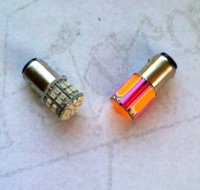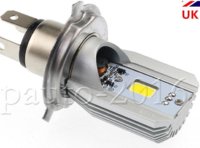Hitndahedfred
Do I look like a people person to you?
=============================================================Note: Had to pull the Led bulb out, checked my Votage after a 1/2 hr ride and was showing 16 Volts !!
Installed the old bulb and back to 14.5. Not sure why that is but not interested in trying to get it to work correctly and
possibly bake my battery and who knows what else.The light was great at night though and kinda bummed
it didn't work out.Anyone want a new bulb cheap?
Since I am NOT running a battery or a cap I would love to give it a try.
PM me and I will even pay to have it shipped.
Will then report back here if it works fine or not on my setup.
Been thinking about trying one for a while.


